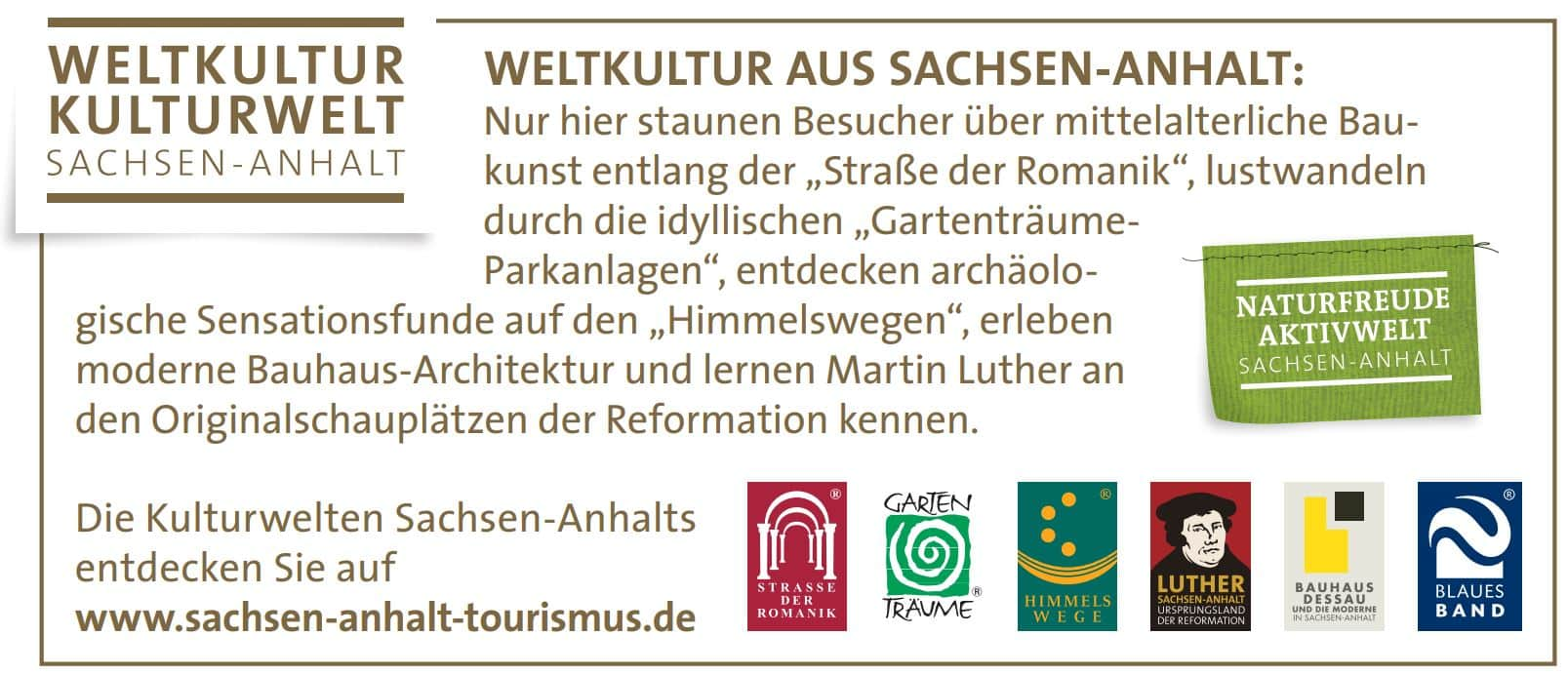Activities for your stay
Picturesque Quedlinburg, the entire Harz foothills, and of course the mighty Harz Mountains themselves offer countless opportunities for great activities with your holiday apartment as a base. Here you’ll find a few suggestions from us.
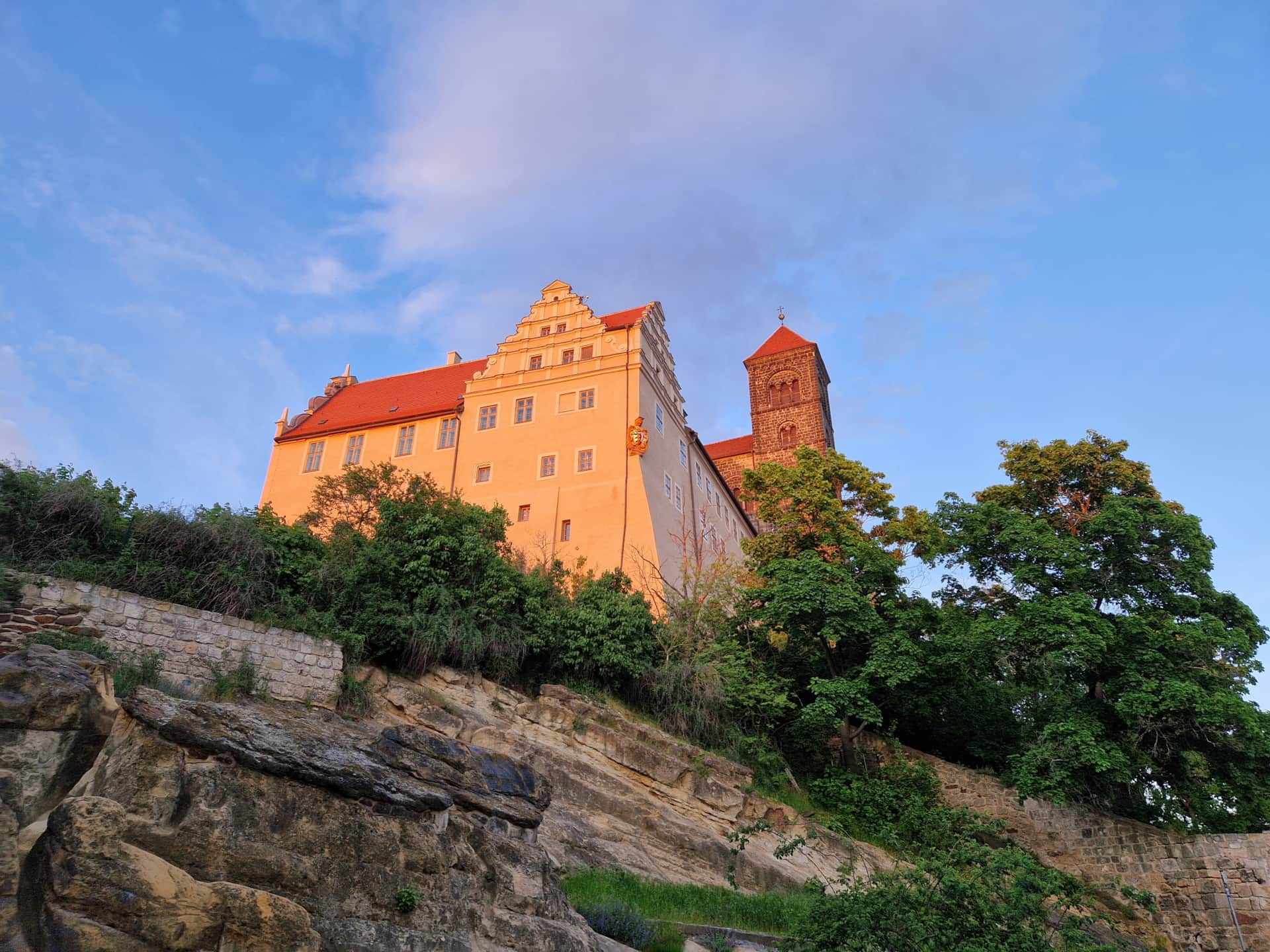
The Quedlinburg Castle
High above the old town, Quedlinburg Castle sits majestically on striking sandstone cliffs, once home to a secular ladies’ chapter. Together with St. Servatius collegiate church and the cathedral treasury, it is a unique testament to medieval architecture and history—where culture, architecture and panorama blend into an unforgettable experience.
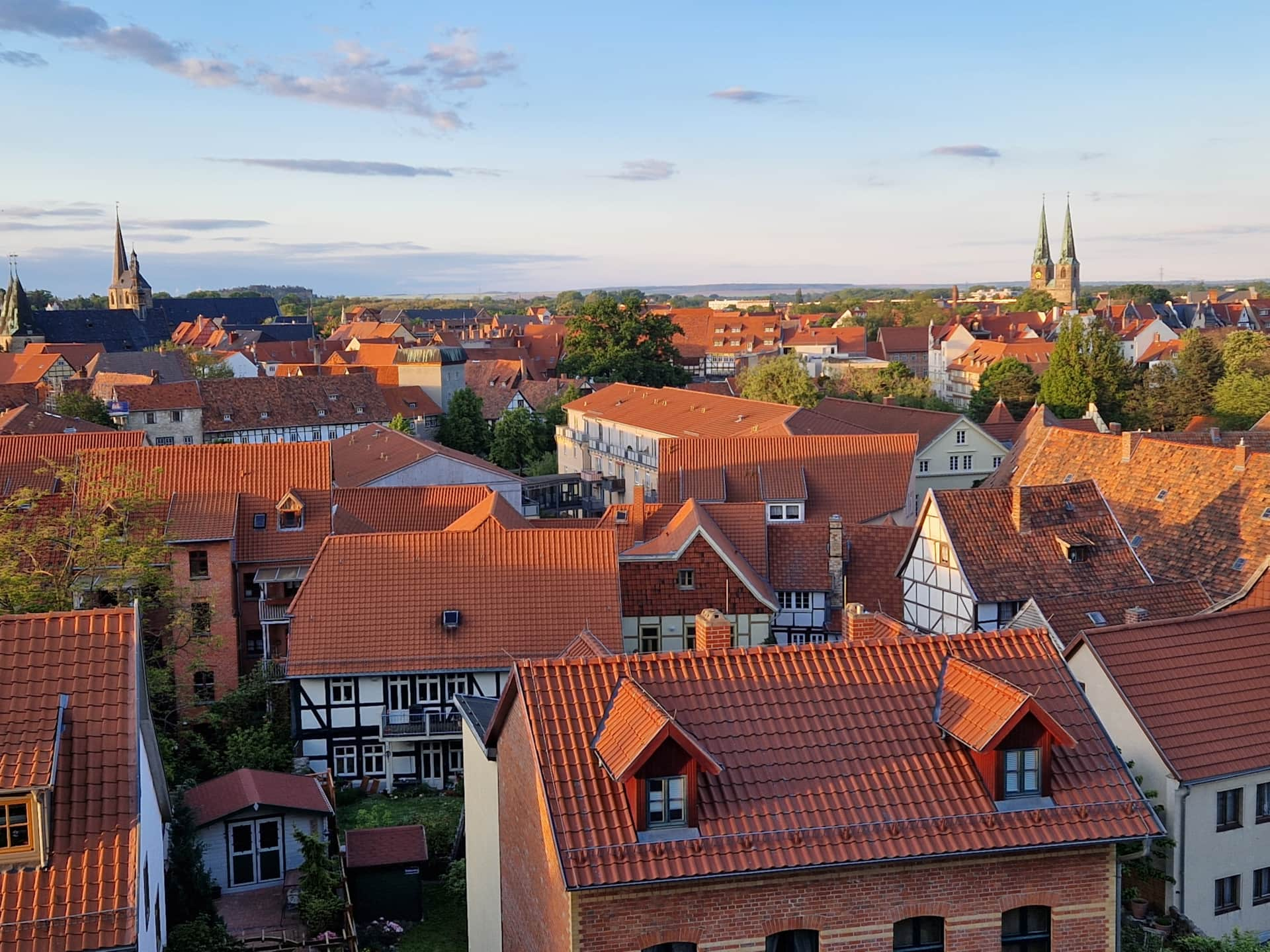
View over Quedlinburg’s old town
From the castle plateau you enjoy a wonderful view over the sea of red roofs. Connoisseurs will also spot the “new town”—founded in the late 12th century. In Quedlinburg, everything is a bit older. Henry I, the first German king, is said to have stood here as well; as Duke of Saxony he was offered the German crown in Quedlinburg in 919.
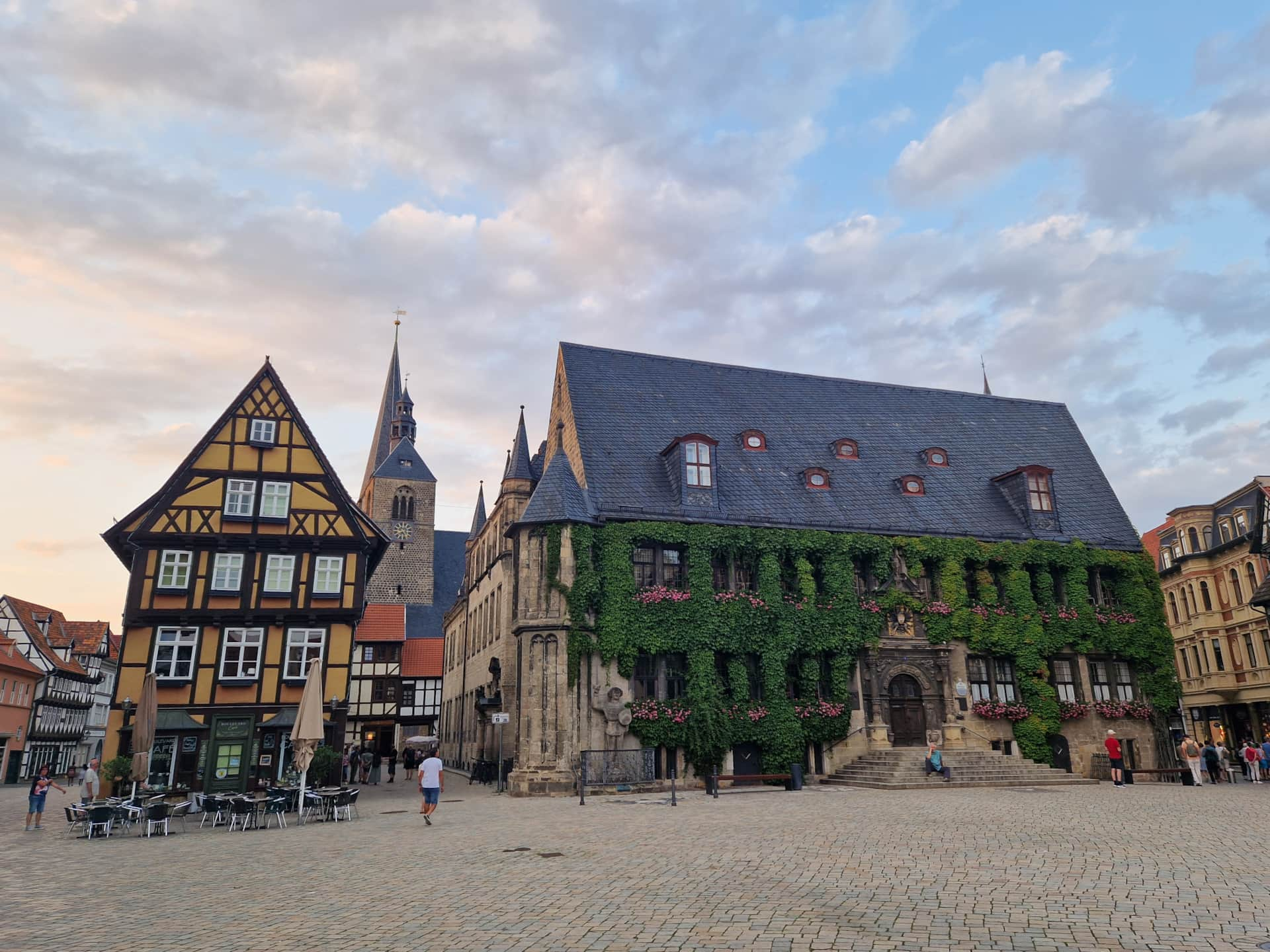
Quedlinburg’s historic town hall
Quedlinburg’s historic town hall on the market square is among the most important buildings of the old town. Built in the 14th century, it impresses with a façade rich in late Gothic and Renaissance details. Draped in wild vines and ornamented with fine workmanship, it forms the centre of the square and still houses the city administration. Together with the surrounding half-timbered houses, it conveys the unmistakable charm of the UNESCO World Heritage city.
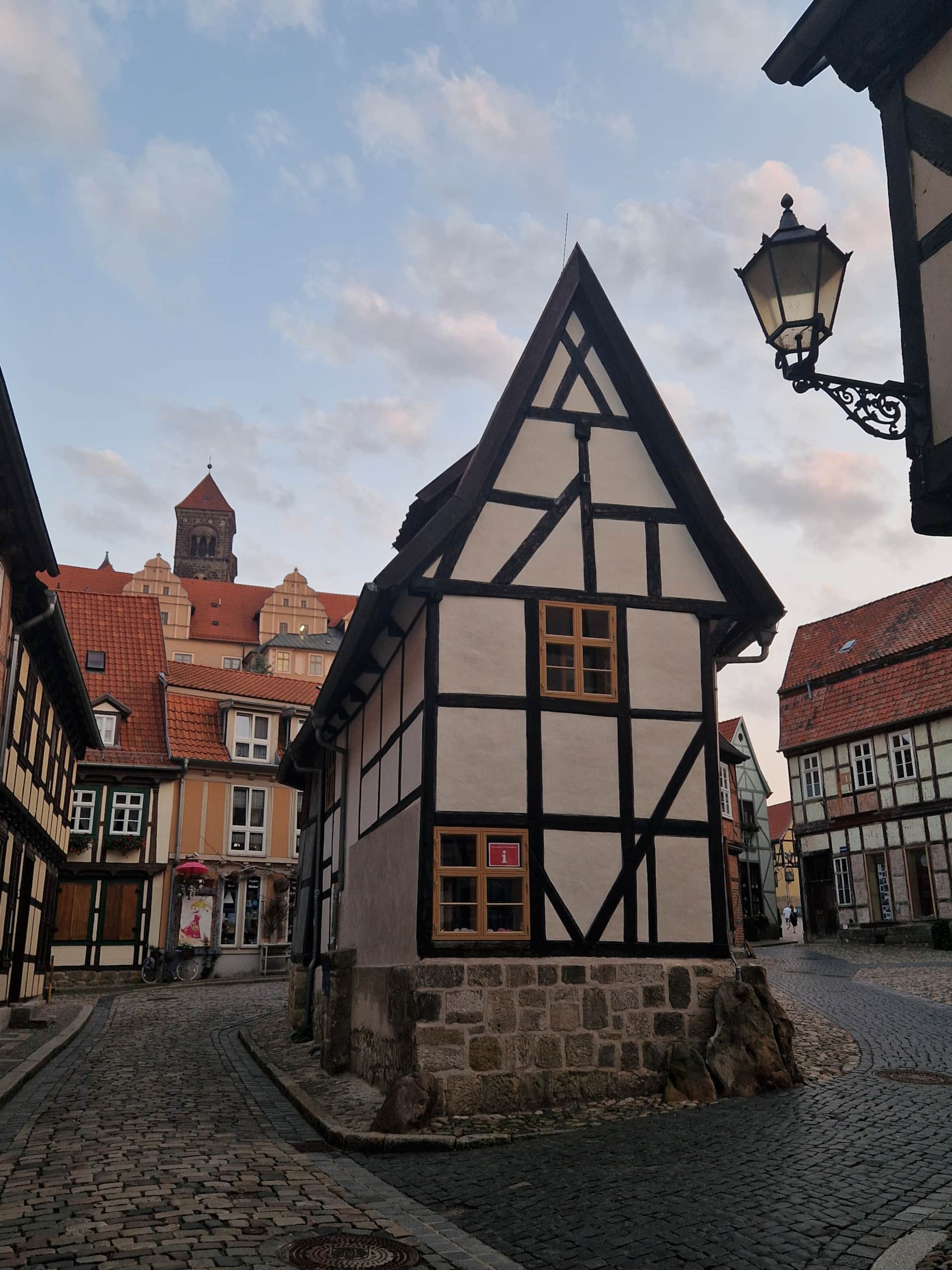
The Finkenherd
The “Finkenherd” below the castle is a legendary site closely tied to the beginnings of German kingship. Tradition holds that Duke Henry of Saxony learned here in 919 of his election as the first German king—while he was out hunting finches. A plaque commemorates the event today, and the spot’s picturesque setting invites a stroll through history and legend.
On your way climbing up towards the castle from the old town you can't miss the Finkenherd.
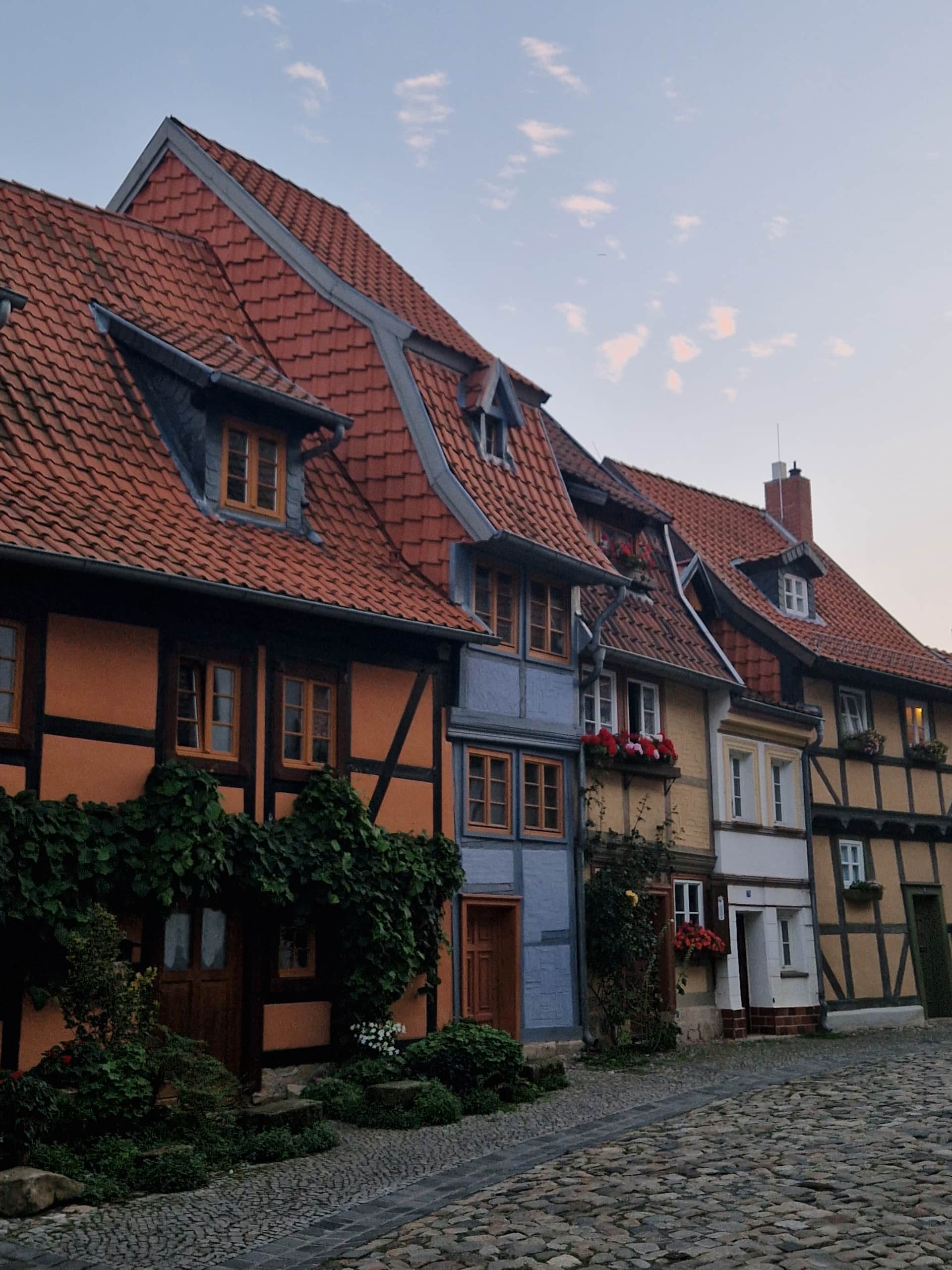
Half-timber idyll on Wassertorstraße
Wassertorstraße below the castle hill is one of Quedlinburg’s most picturesque lanes, famed for its striking half-timbered houses. Many date from the 16th and 17th centuries and showcase the variety of regional half-timbered craftsmanship—from intricately carved beam ends to detailed inscriptions. You’ll also find Quedlinburg’s narrowest house here!
The view along the narrow lane up to the castle hill is especially appealing and makes the historical backdrop even more impressive. A stroll along Wassertorstraße feels like stepping back in time and shows why Quedlinburg is UNESCO World Heritage.
Today the street is defined by its continuous row of half-timbered houses, whose original character creates a special atmosphere. It’s an authentic example of the city’s historic building culture and a popular photo spot for visitors.
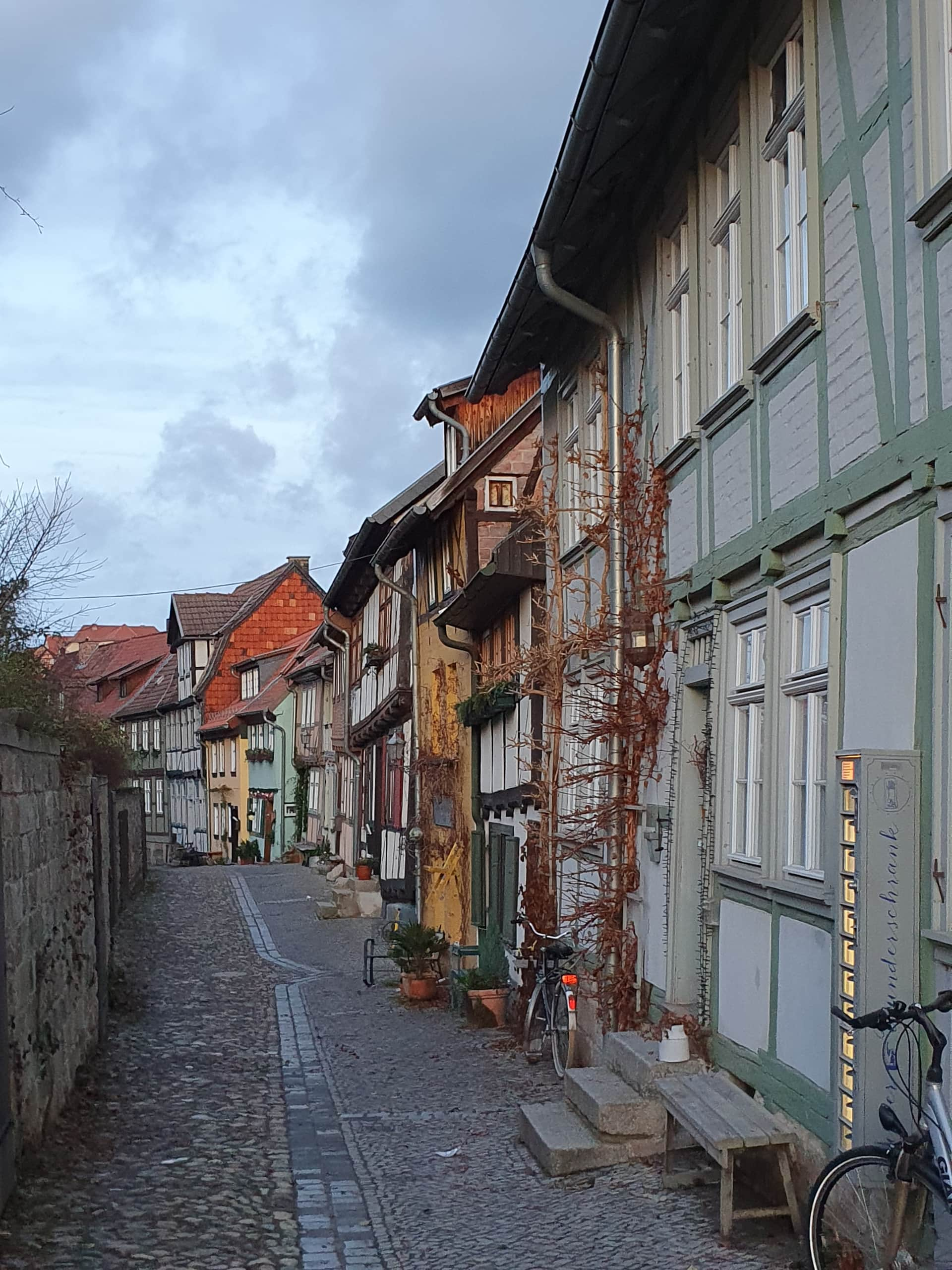
Hunkered half-timbered cottages below the castle hill
On the castle’s northern side, along the street called Schlossberg, you’ll find some of Quedlinburg’s most beautiful photo motifs. Numerous small half-timbered cottages line up here, each like a little gem.
Historically the street is significant: at the foot of the castle hill there were settlement sites as early as the Ottonian period, forming the nucleus of later urban development. The castle hill is thus not only architecturally appealing but also a place where Quedlinburg’s early history becomes visible.
Do check out the “Papierwunderschrank”—a unique art vending machine—on this street.
You can also stop for refreshments at the small café “Schlossmaulwurf.”
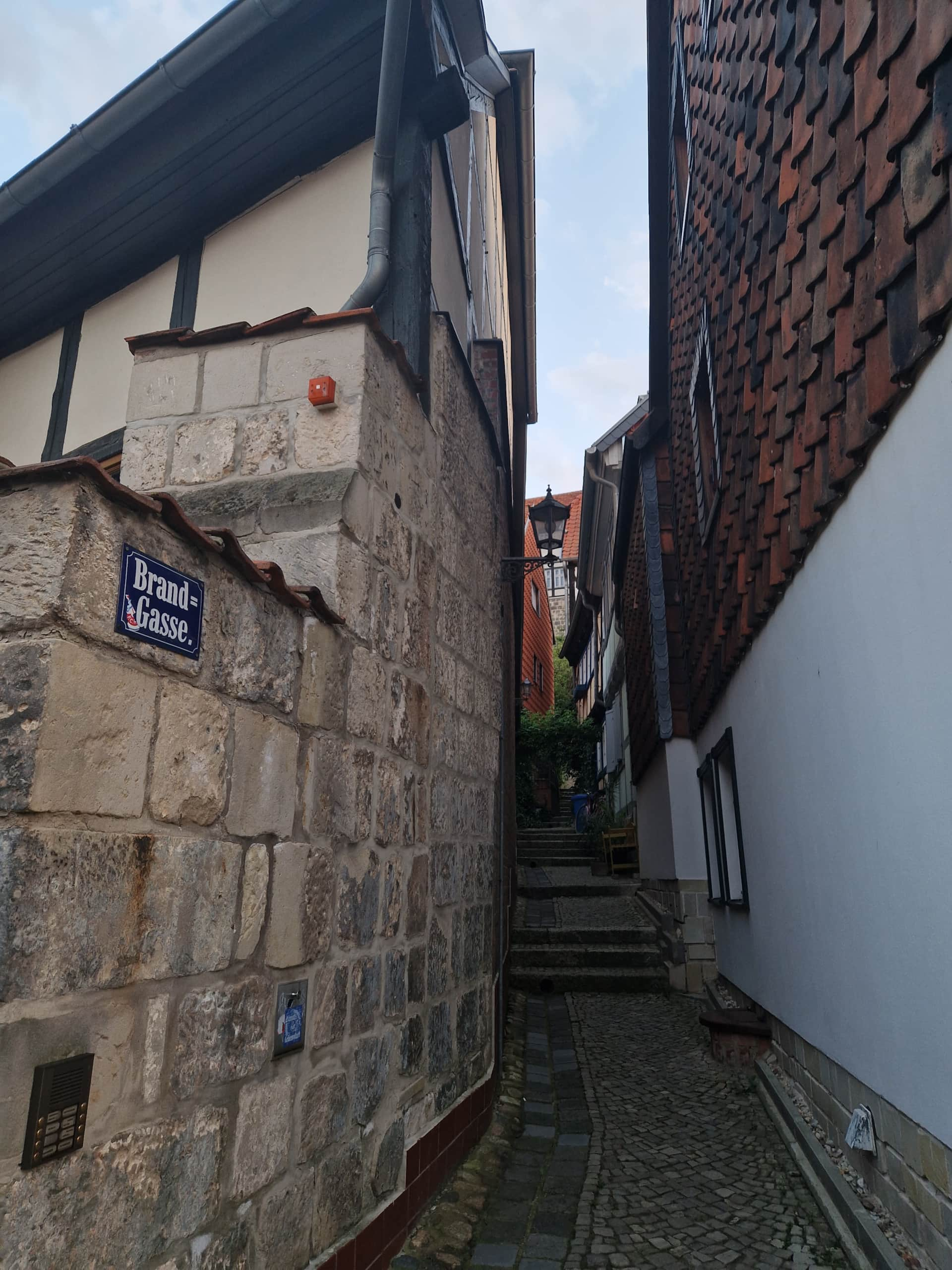
Brandgasse — things get narrow here
Brandgasse below the castle is one of Quedlinburg’s narrowest lanes and lives up to its reputation: “things get tight here.” Between the closely packed half-timbered houses there is often only a slim passageway, bringing the medieval townscape vividly to life.
The lane’s narrowness recalls the building practices of past centuries, when space was scarce and houses were built tightly together. Today it’s a popular photo subject and an impressive example of the UNESCO World Heritage city’s maze-like structure.
Especially together with the adjoining lanes, Quedlinburg’s charm reveals itself: narrow paths, centuries-old houses and a living piece of urban history. A walk through Brandgasse is therefore not just a passage through a tight alley, but also a small journey back to the Middle Ages.
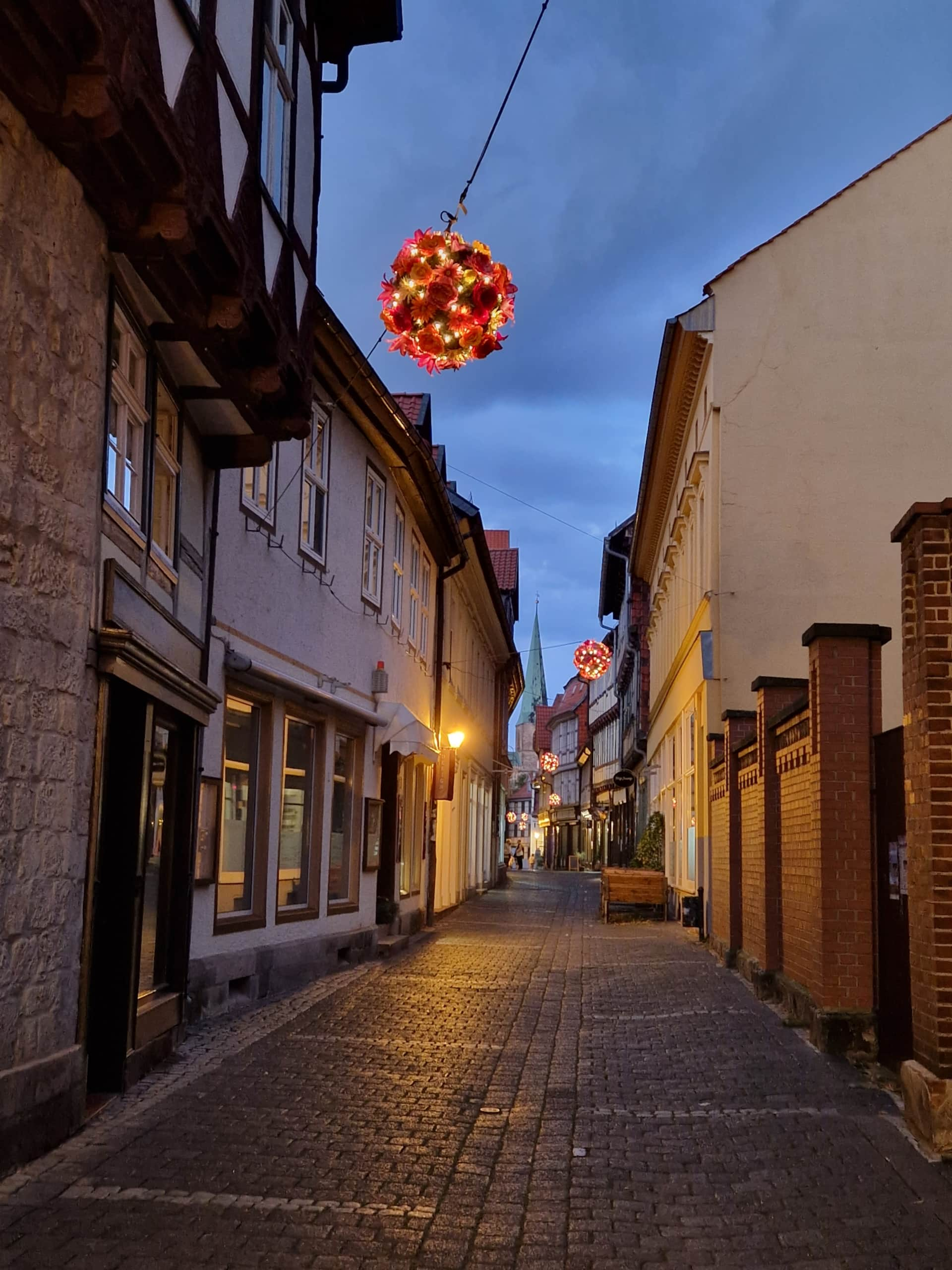
Bockstraße — shopping in a historic setting
Bockstraße is one of Quedlinburg’s vibrant shopping streets, blending modern life with historical flair. Numerous specialist shops, boutiques and small stores invite you to stroll and linger. Amid lovingly restored half-timbered houses from several centuries, visitors discover a wide range—from traditional crafts to modern products.
Historically, Bockstraße was one of the city’s most important thoroughfares. As early as the Middle Ages, an important trade route ran here linking Quedlinburg with the surrounding area. Merchants and craftspeople settled along the street, and their splendid half-timbered buildings still testify to prosperity and significance. Bockstraße is thus not only an attractive place to shop but also an authentic slice of urban history.
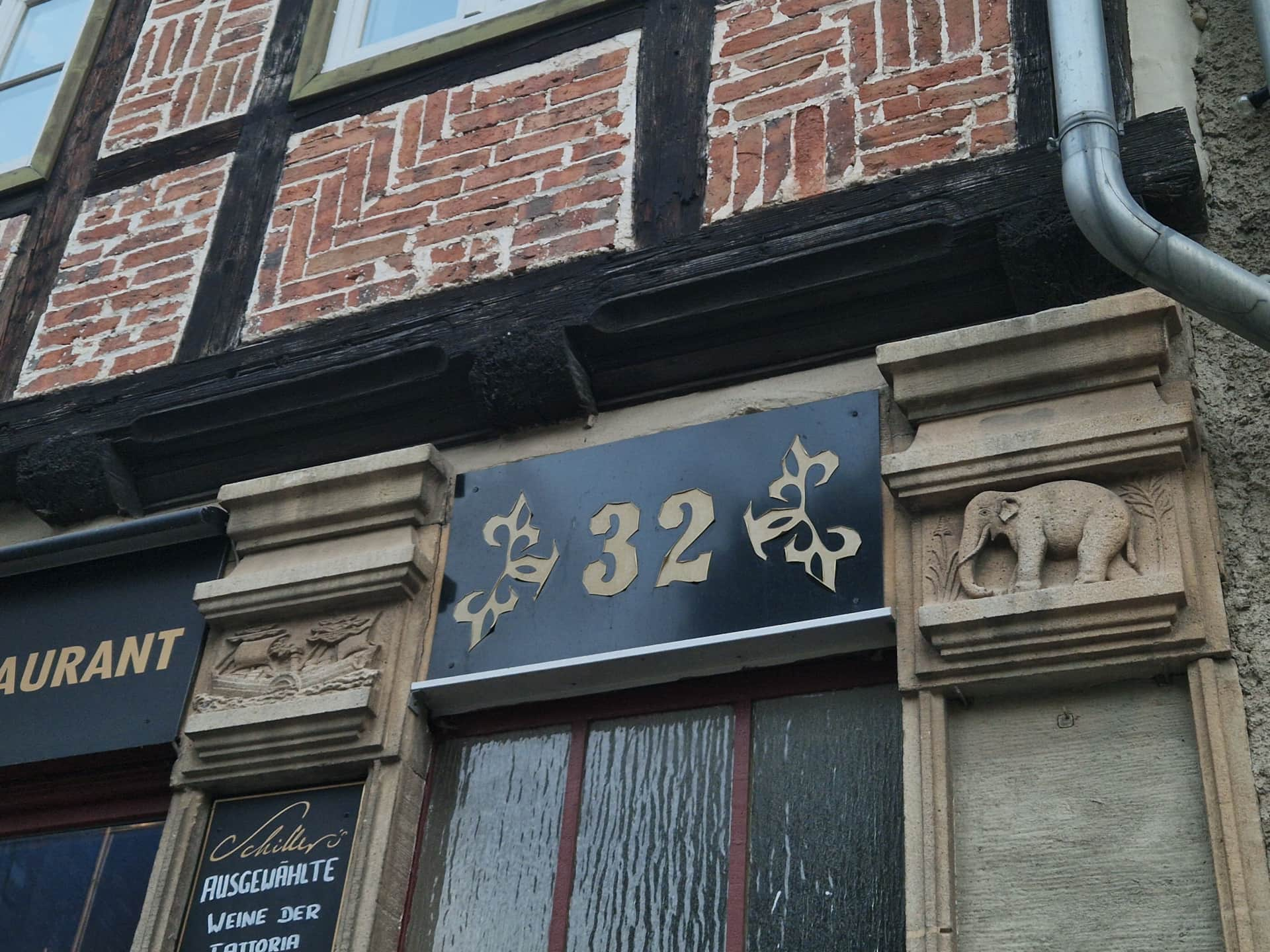
Former colonial-goods store on Lange Gasse
You’ll find a lovely detail on the way along Lange Gasse up to the castle hill. At No. 32 you’ll suddenly spot an elephant and an old merchant sailing ship. These animal reliefs adorn the pilaster capitals dating from 1900 and once decorated a colonial-goods store. The core of the house, however, goes back to 1680. For many Quedlinburg houses you’ll find a Wikipedia page—this one included.
Today the building houses the restaurant Schiller’s, popular with our guests for a great breakfast, as it’s only about a 500-metre walk over the castle hill.
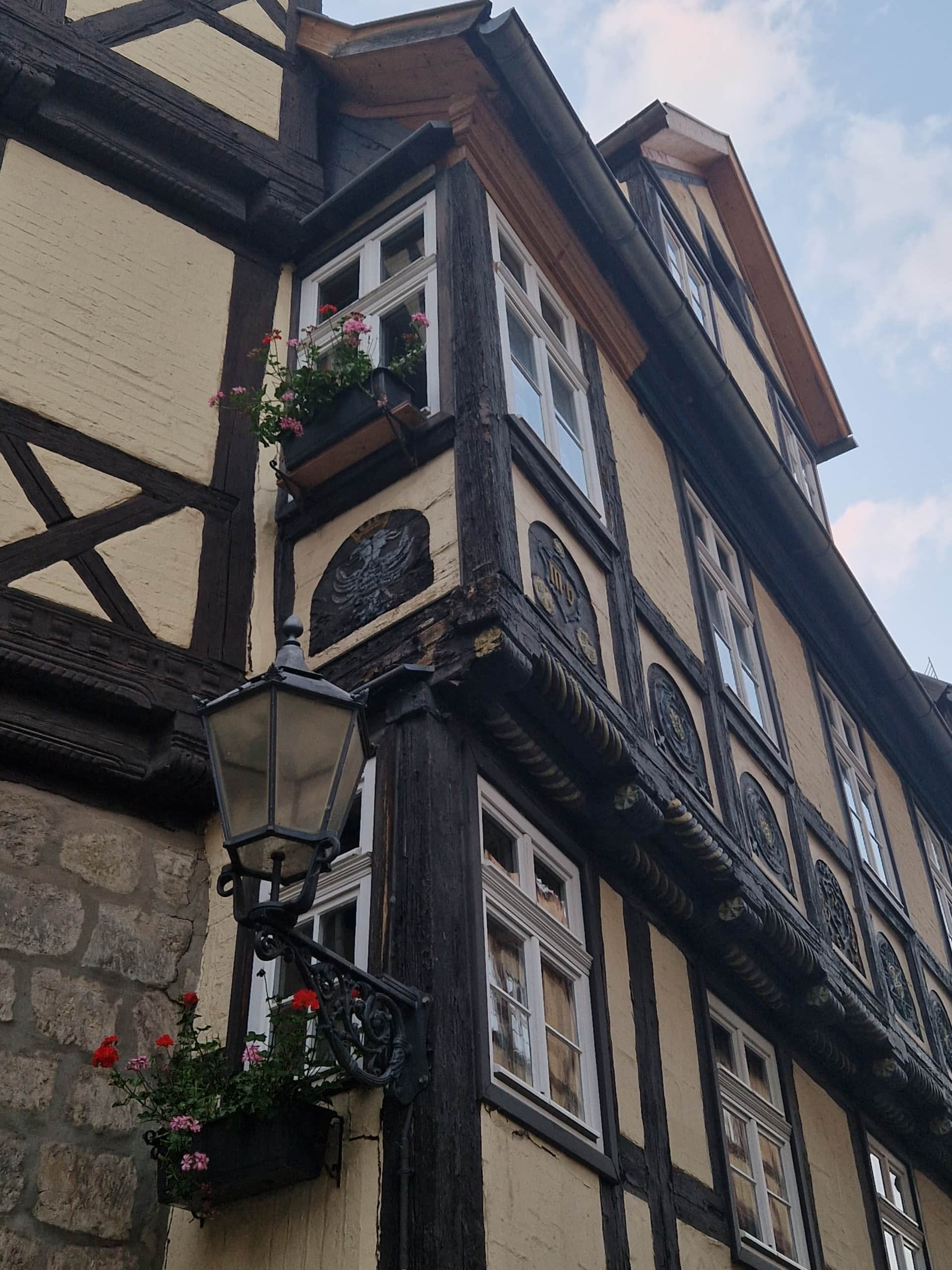
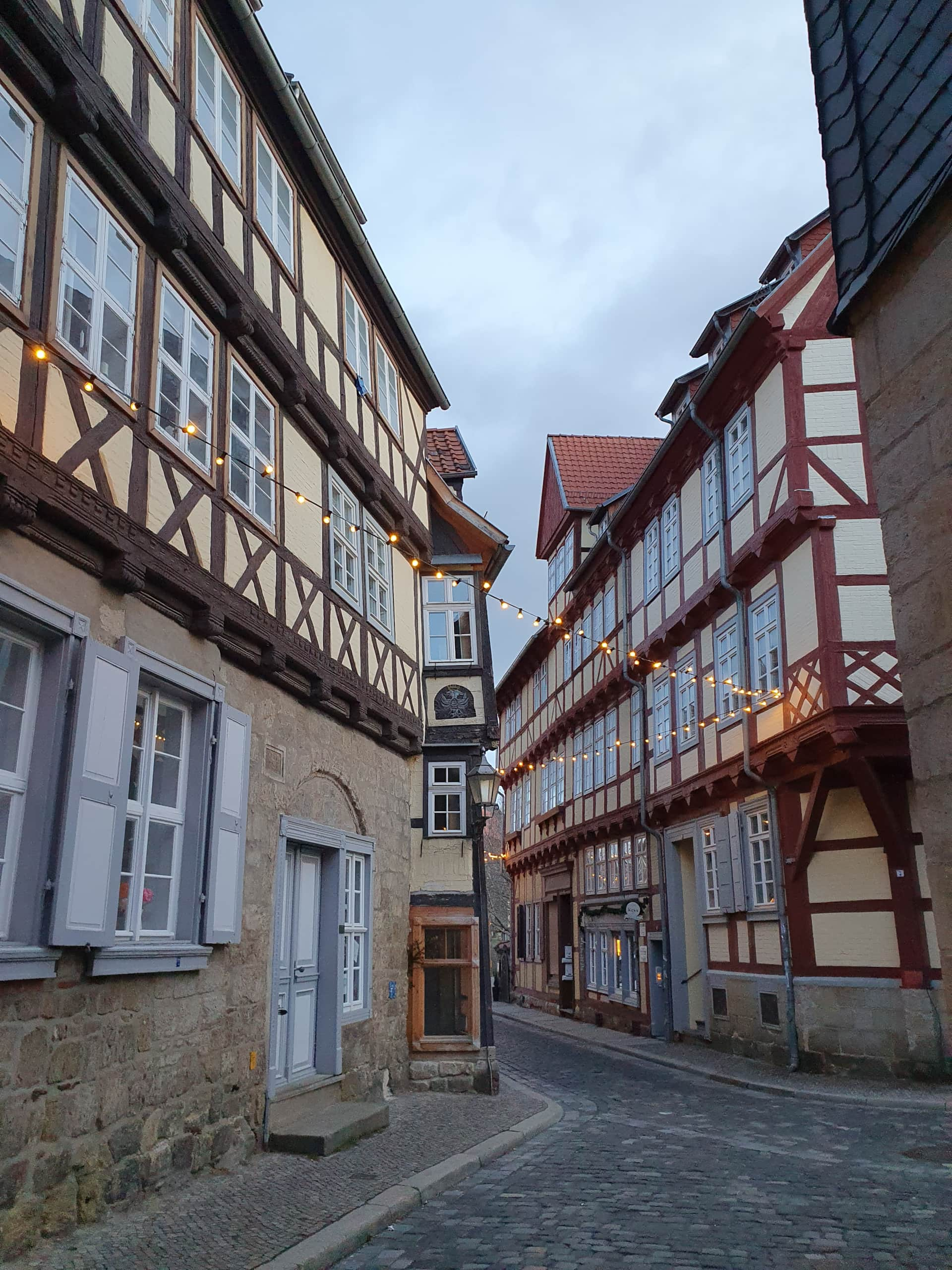
You’ll also find numerous other impressive half-timbered houses along Lange Gasse. With a bit of luck, on Open Monument Day you might be able to visit one of the cellars hewn into the sandstone—some of which descend five storeys into the ground!
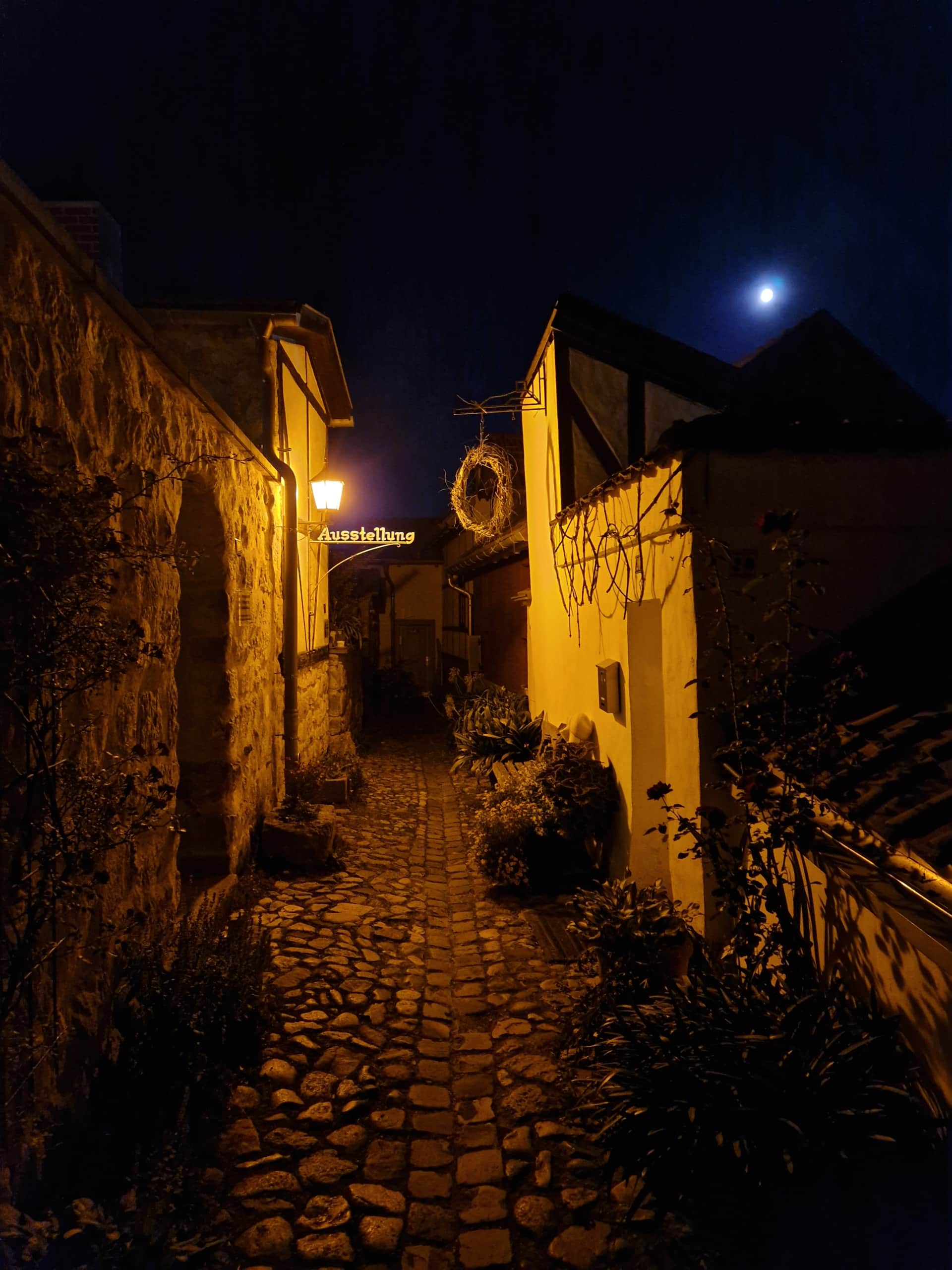
Der Münzenberg – ein Dorf in der Stadt
The Münzenberg rises picturesquely above Quedlinburg and feels like a village at the city’s heart. Narrow lanes, cobbled paths and small half-timbered houses create an almost rustic atmosphere—right beneath the mighty collegiate church of St. Servatius.
Originally a monastery stood here in the Middle Ages; later, its walls were repurposed into dwellings by simple craftsmen and labourers. This gave rise to a unique settlement that has preserved its original character to this day. A walk across the Münzenberg is a journey into the past: among half-timbered houses, flowers and romantic corners, breathtaking views of the UNESCO World Heritage town’s rooftops open up again and again.
Especially in the evening, when lanterns and moonlight illuminate the lanes, the Münzenberg reveals its very special magic.
